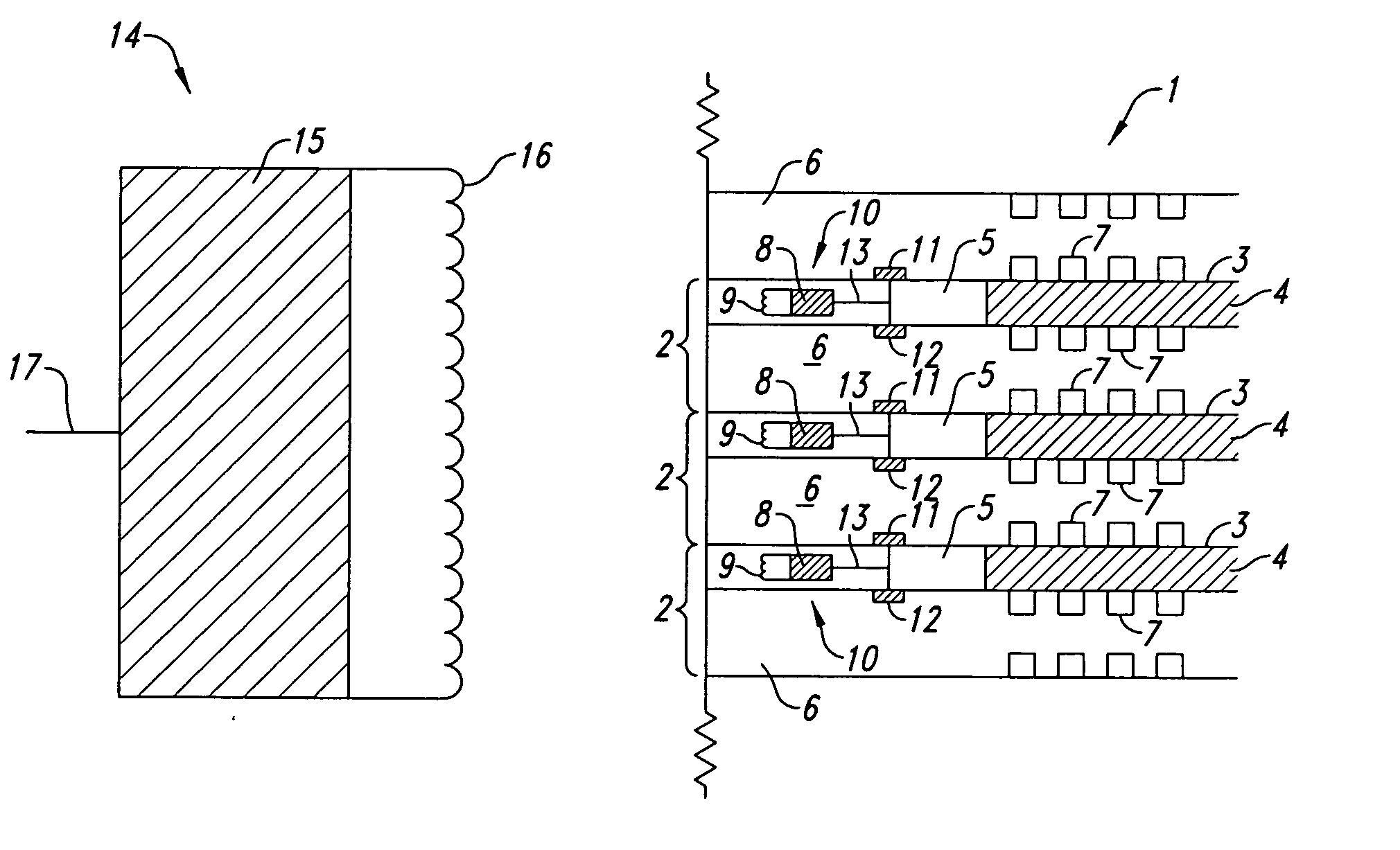Monitoring fuel cells using RFID devices
a technology of radio frequency identification and fuel cell, which is applied in the direction of fuel cells, fuel cell auxiliaries, electrochemical generators, etc., can solve the problems of internal damage to reversed cells and stacks, difficult to develop a suitable cell voltage monitor (cvm) for this purpose, and complex operation of a complete fuel cell system
- Summary
- Abstract
- Description
- Claims
- Application Information
AI Technical Summary
Benefits of technology
Problems solved by technology
Method used
Image
Examples
example
[0048] A cell voltage monitoring system was designed for use in a solid polymer electrolyte fuel cell stack. The transponder design was similar to that generally shown in FIG. 2a and used commercially available RFID components, including a microID MCRF200 tag comprising a 125 kHz chip programmed in-house and a microID Reader. (These components are part of a microID Developer's kit that can be obtained from Microchip.) FIG. 4 shows a model of the operating transponder. In the model circuit of FIG. 4, chip 60 represents the aforementioned 125 kHz chip and coil 61 is a conventional coil provided with the kit. Resistor 62 and capacitor 63 represent the resistance and capacitance found in the modeled circuit and signal 64 represents the voltage induced in the circuit via interaction with the reader. The conventional circuit was modified by providing cathode and anode voltage inputs from simulated cell 65 at points 71 and 72, respectively, and transistor 68 and capacitor 69 were added to ...
PUM
| Property | Measurement | Unit |
|---|---|---|
| output voltage | aaaaa | aaaaa |
| frequency | aaaaa | aaaaa |
| temperature | aaaaa | aaaaa |
Abstract
Description
Claims
Application Information
 Login to View More
Login to View More - R&D
- Intellectual Property
- Life Sciences
- Materials
- Tech Scout
- Unparalleled Data Quality
- Higher Quality Content
- 60% Fewer Hallucinations
Browse by: Latest US Patents, China's latest patents, Technical Efficacy Thesaurus, Application Domain, Technology Topic, Popular Technical Reports.
© 2025 PatSnap. All rights reserved.Legal|Privacy policy|Modern Slavery Act Transparency Statement|Sitemap|About US| Contact US: help@patsnap.com



